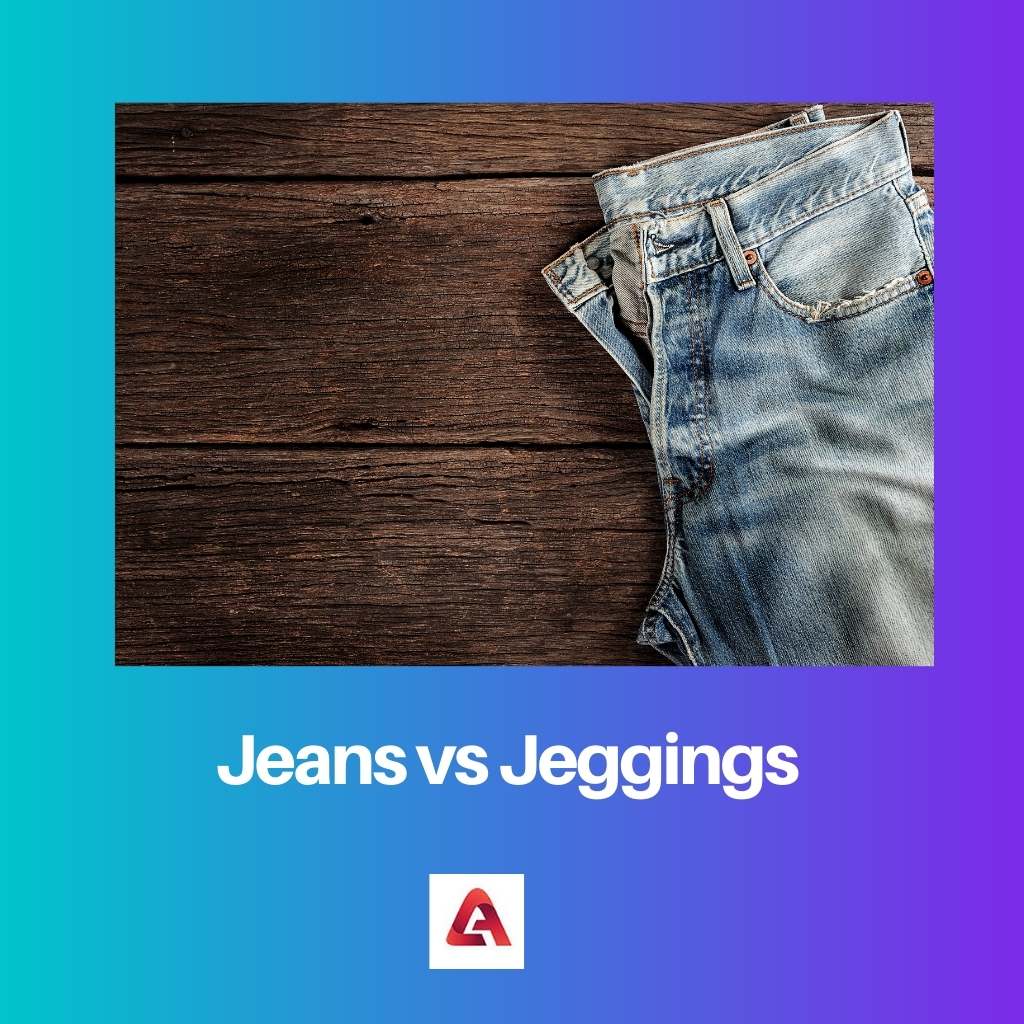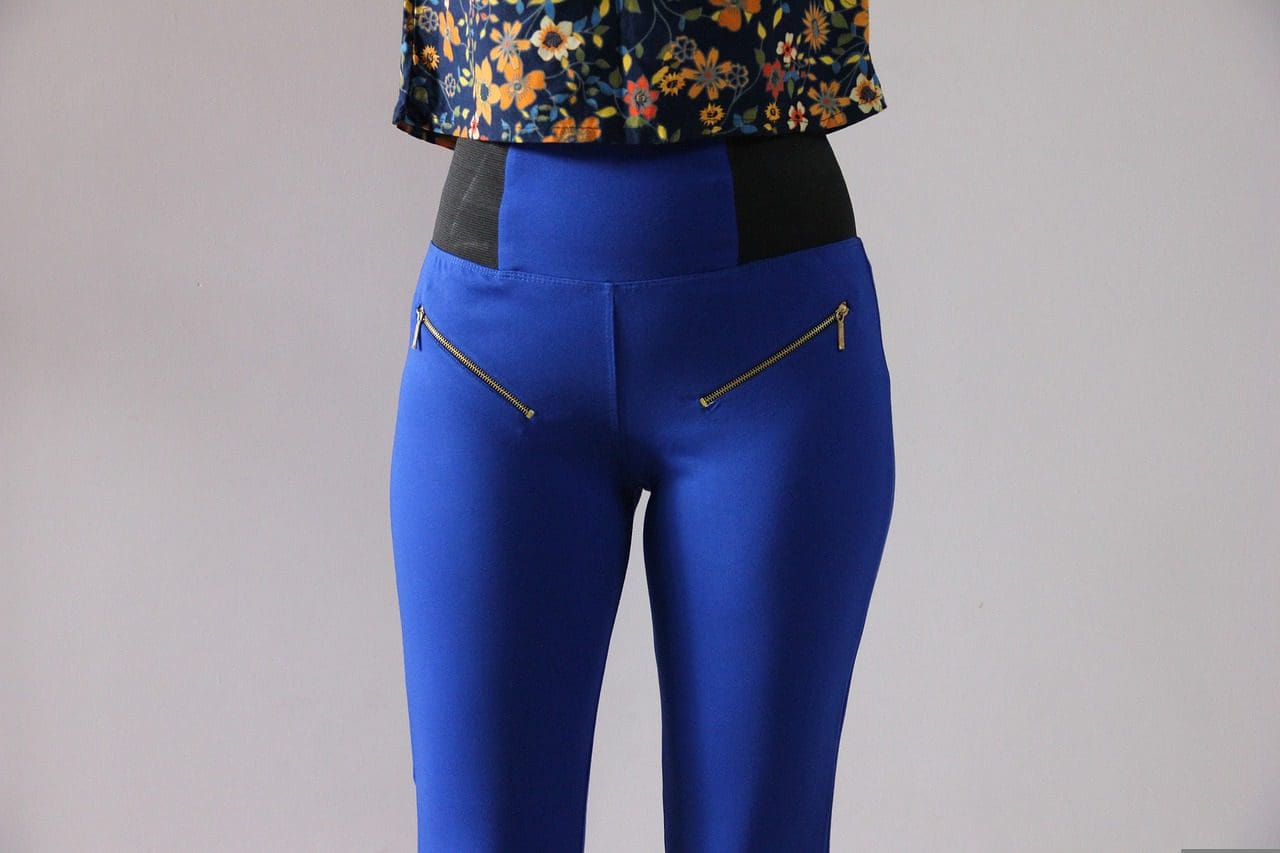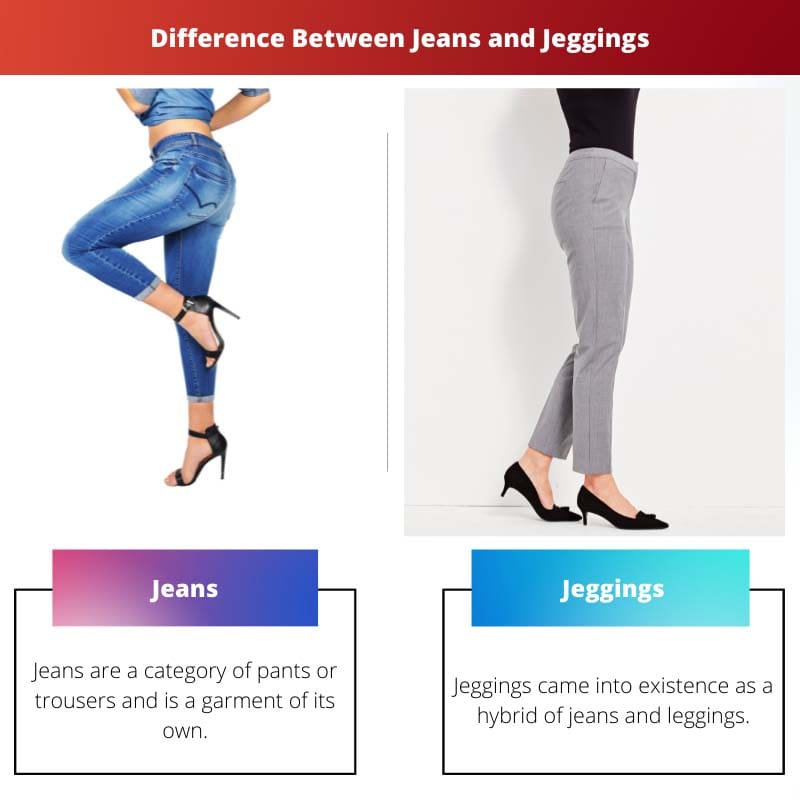Fashion is the rule of life. As said, we are what we wear. Following this thought, the choice of clothing plays a crucial role in an individual’s life.
Likewise, there are a number of available options in the consumer market that confuse individuals. Jeans and Jeggings are a pair of clothing that people find confusing to choose from.
Key Takeaways
- Jeans are made from heavier denim fabric, while jeggings consist of lighter, stretchable materials.
- Jeggings resemble leggings with a jeans-like appearance, whereas jeans have a more rigid and structured fit.
- Jeans feature functional pockets and zippers, while jeggings have faux pockets and elastic waistbands.
Jeans vs Jeggings
Jeans are trousers which are made from denim or cotton fabric, they are durable and come in different styles and colors. Jeggings are a hybrid form of leggings and jeans, and they are made from lycra, spandex, and cotton.

Jeans are a category of pants or trousers that use dungaree or denim cloth as raw materials. In addition, detailed steps take shape to attain the desired look, such as acid wash, ripping, or distressing jeans.
Manufacturers produce specially-treated jeans to serve the interests of customers who choose to wear jeans that look used.
Jeggings are leggings that appear to be identical to skin-tight denim jeans. The word jeggings is a portmanteau of jeans and leggings. In addition, jeggings were the style quotient of the twentieth century.
Jeggings were seen as a comfortable piece of clothing that gave the appearance of a pair of jeans.
Comparison Table
| Parameters of Comparison | Jeans | Jeggings |
|---|---|---|
| Meaning | Jeans are a category of pants or trousers and is a garment of its own. | Jeggings came into existence as a hybrid of jeans and leggings. |
| Comfort | Jeans offer less comfort and flexibility as compared to jeggings. | Jeggings offer more comfort and flexibility as compared to jeans. |
| Features | Jeans possess pant buttons and zippers that are functional. | Jeggings possess a false appearance of zippers and pant buttons. |
| Stretchability | The stretchable capacity of jeans is less than that of jeggings. | The stretchable capacity of jeggings is more than that of jeans. |
| Composition | The proportion of denim is greater in jenas. | The proportion of spandex is greater in denims. |
What are Jeans?
Jeans are a category of pants or trousers that use dungaree or denim cloth as raw materials. Usually, the terminology has used to refer to typical blue jeans.
The founder of blue jeans was Jacob W. Davis, along with Levis Strauss & Co. Before the official term came into existence, the word jeans connotated pants, trousers, or lowers in general.
The fabric for jeans originated in Genoa, Italy, and France. There is a long-term process involved in the manufacturing of jeans. The first step is dyeing the fabric of the jean using the natural indigo dye.
Today, natural indigo has been replaced by synthetic dye. The next step is pre-shrinking wherein, which is commonplace in jeans today.
Furthermore, detailed steps take shape to attain the desired look, such as acid wash, ripping, or distressing jeans.
Manufacturers produce specially-treated jeans to serve the interests of customers who choose to wear jeans that look used.
However, the damaging effects of manufacturing a single pair of jeans due to water loss should be considered too.
There is a wide multitude of jeans available to potential buyers today. Some of the examples include straight jeans, ripped jeans, cropped jeans, skinny jeans, cigarette jeans, and wide-legged jeans.
Over the years, there has been an evolution in the style quotient delivered by every individual pair of jeans.

What are Jeggings?
Jeggings refer to those that appear identical to skin-tight denim jeans. The word jeggings is a portmanteau of jeans and leggings.
The raw material used for manufacturing jeggings is either cotton or spandex blend. Jeggings vary in their colors, fittings, and other specifications. While some jeggings may have pockets, others may have an elastic waistband.
Typically, there are two types of jeggings. The first type of jeggings are legging materials with false pockets and belt loops to resemble a pair of jeans. Another category of jeggings is denim jeggings.
Denim jeggings are similar to a pair of jeans, also known as pull-on jeans, rather than jeggings.
Jeggings came into existence in early 2010. Thus, jeggings were the style quotient of the twentieth century. Jeggings were seen as a comfortable piece of clothing that gave the appearance of a pair of jeans.
Therefore, jeggings came into being to satisfy the demand for tighter styles of pants that came from the consumer market.
Jeans feel significantly less rigid than jeans. In addition, the fact that jeggings are nothing but pull-on trousers gives them an added advantage over jeans.
Jeggings are popular for both the comfort and flexibility that they offer to men and women. Thus, jeggings have become a preferred choice of clothing over the years.

Main Differences Between Jeans and Jeggings
- Jeans are a category of pants or trousers and are a garment of its own. On the other hand, jeggings came into existence as a hybrid of jeans and leggings.
- Jeans possess pant buttons and zippers that are functional. In contrast, jeggings possess a false appearance of zippers and pant buttons.
- Jeans offer less comfort and flexibility as compared to jeggings.
- The stretchable capacity of jeans is less than that of jeggings.
- The proportion of denim is greater in jeans. On the other hand, the proportion of spandex is greater in denims.

- http://www.differencebetween.net/language/words-language/difference-between-jeans-and-jeggings/#:~:text=The%20main%20difference%20between%20the,a%20select%20range%20of%20sizes.
- http://www.differencebetween.info/difference-between-jeans-and-jeggings





There are also environmental considerations to make when choosing between jeans and jeggings, which should not be overlooked.
Thanks for the detailed explanation! I have always been curious about the differences between jeans and jeggings.
Right? I was also curious about the history behind jeans and its manufacturing process.
The concept of jeggings seems like fashion’s practical joke. The idea of combining jeans and leggings is comical.
The fashion industry is truly fascinating. The evolution of jeans and jeggings over time demonstrates the constant change in the way people dress.
I never realized the detailed process that goes into manufacturing jeans. It makes me appreciate the craftsmanship behind each pair of jeans.
I appreciate the comparison table – it clearly defines the main differences between jeans and jeggings for people who are unsure of which to choose.